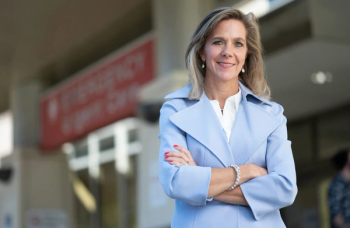
Population health is the new public health | David Nash
America can move toward a transformed health system responsible for our wellness and a new paradigm of population health, led by medical professionals.
COVID-19 has crashed the U.S. healthcare system and blasted a searing light on the social determinants of health.
In doing so, the virus — and more importantly, its consequences — exposed a truth that my colleagues and I have been preaching for over a decade: the public health paradigm is outdated and insufficient. Its major tenets — including public health, epidemiology, behavioral science, and the environment — are important but reactive.
We must also consider the quality and safety of the care we deliver, the cost of that care and an array of shifting public policy considerations.
The business of health
Healthcare is the biggest business in this country, but we rarely stop to consider what, exactly, that business has become.
Are healthcare providers in the business of improving and maintaining health? Or is our purpose to simply perform more procedures and fill all of those beds?
The vast majority of doctors I know feel too disconnected from the system to answer. They see themselves as pawns or, worse, as victims while they should be leading the charge into the population health paradigm, which balances treating the sick with keeping people healthy. Widening care disparities and precarious SDOH demand it.
Consider the social determinants in a city like Philadelphia, where I have worked for the past three decades. Ours is the poorest of the top ten cities by population. One-quarter of Philadelphians live in poverty and one-half are in deep poverty, meaning that they can’t put food on the table. During the height of the pandemic, the lines for food exceeded the lines for medical help.
No surprise, then, that the death rate for people of color was much higher than for other demographics of patients. The inherent inequality in our system guaranteed a lack of access, a lack of resources, and a lack of insurance for those who were constantly being exposed to the virus because they must work public-facing jobs.
Leading from within
Doctors are not social workers, but we can still work to shut down illness at the source, when it’s still a drip, rather than wait to address it downstream, when it’s become a flood.
Imagine if the population of Philadelphia was healthier pre-Covid; if we had less inequality, we could have reduced the unbelievable death rate in minority populations. If only we had paid attention to obesity, smoking, heart disease, exercise, nutrition — softer issues that the system largely ignored because there were no incentives to do otherwise. Indeed, the flood fills up a lot of beds.
As an academic, I have been pushing towards a population health paradigm for more than a decade. This means changing undergraduate and graduate medical education curricula. Let’s bring the tenets of population health to UME and GME.
Is it possible that the pandemic has given us a rocket booster to finally get this information into the curriculum? I’m hopeful that the answer is “yes,” and that we will soon see pharmacy schools, nursing schools, and medical schools incorporate the tenets we’ve been preaching pre-Covid. I’m also hopeful that we’ll see digital healthcare that continues to reduce marginal costs. Both changes will enable us to reach much larger populations at a lower cost than ever before.
There is a caveat: change will only come from the inside. The healthcare system has become so big, so convoluted, and so fortified by business interests that its revolutionaries, like my colleagues who advocate for population health practices, will need to build the equivalent of a Trojan Horse to effect change.
Fortunately, and unfortunately, Covid taught us that the system is not nearly as strong as it appears. Failures of leadership, racial inequities, public health mistakes, and institutional collapses — including in public health — exposed a fragile core surrounded by thick, high walls.
Let’s get past those walls, assess the rot and identify the root causes of how COVID-19 crashed the healthcare system,
— David B. Nash, MD, MBA, is an advisory board member at MediGuru, as well as the Founding Dean Emeritus of the Jefferson College of Population Health and the Dr. Raymond C. and Doris N. Grandon Professor of Health Policy, on the campus of Thomas Jefferson University in Philadelphia, Pa.








































